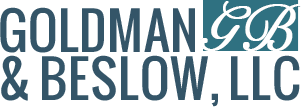The biggest difference between Chapter 7 and Chapter 13 bankruptcy is that in Chapter 13 you repay your debts based on the bankruptcy plan. If you file Chapter 13 in New Jersey, you may wonder how the court creates the repayment plan. There are a few considerations the court makes when developing your plan to ensure fairness to your creditors and to you.
To begin with, according to the U.S. Courts, the court uses your disposable income to figure Chapter 13 payments. This is basically the income you need to support your family. If you own a business, it includes basic operating expenses as well. The court uses your income for the past six months to come up with your average monthly income. It will not include Social Security payments, child support or some personal injury settlement payments.
The court also looks at your debts. If you have priority debts, which are those that take priority over other debts because they are due to the government or through a court order, such as back taxes, you must pay those in full as part of your plan. Any secured debts require payment up to the value of the collateral. Any unsecured debts you have do not require full payment and generally get what is left over out of your monthly payment under the plan.
The court figures how much you owe and how much income you have to determine the length of your plan and the monthly payment amount. The goal is to ensure you can afford the payments and will not default again. If you do default, your case becomes a Chapter 7 bankruptcy. This information is for education only. It is not legal advice.

